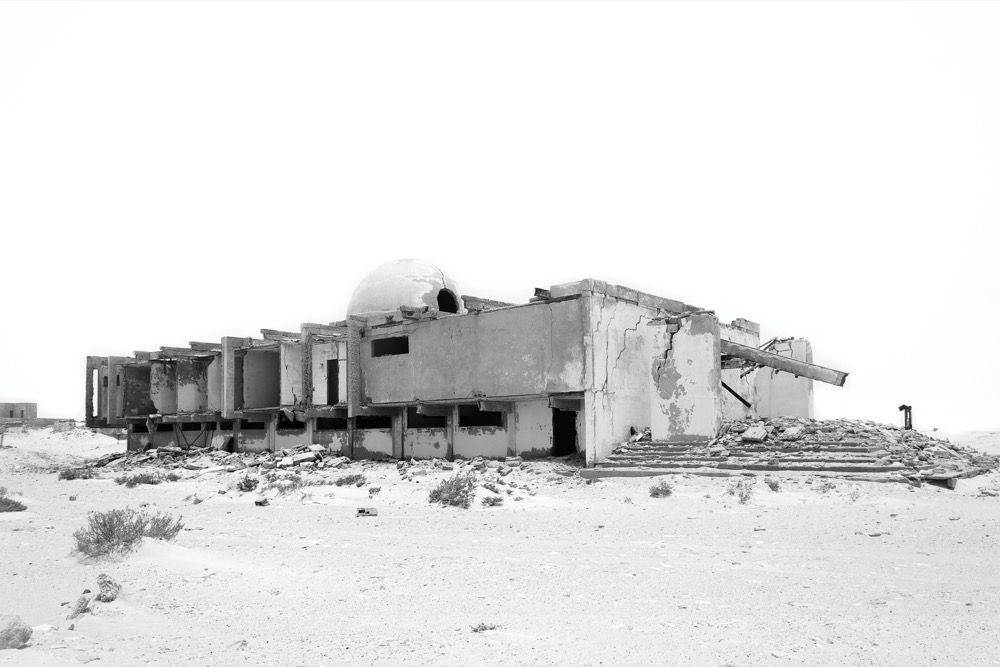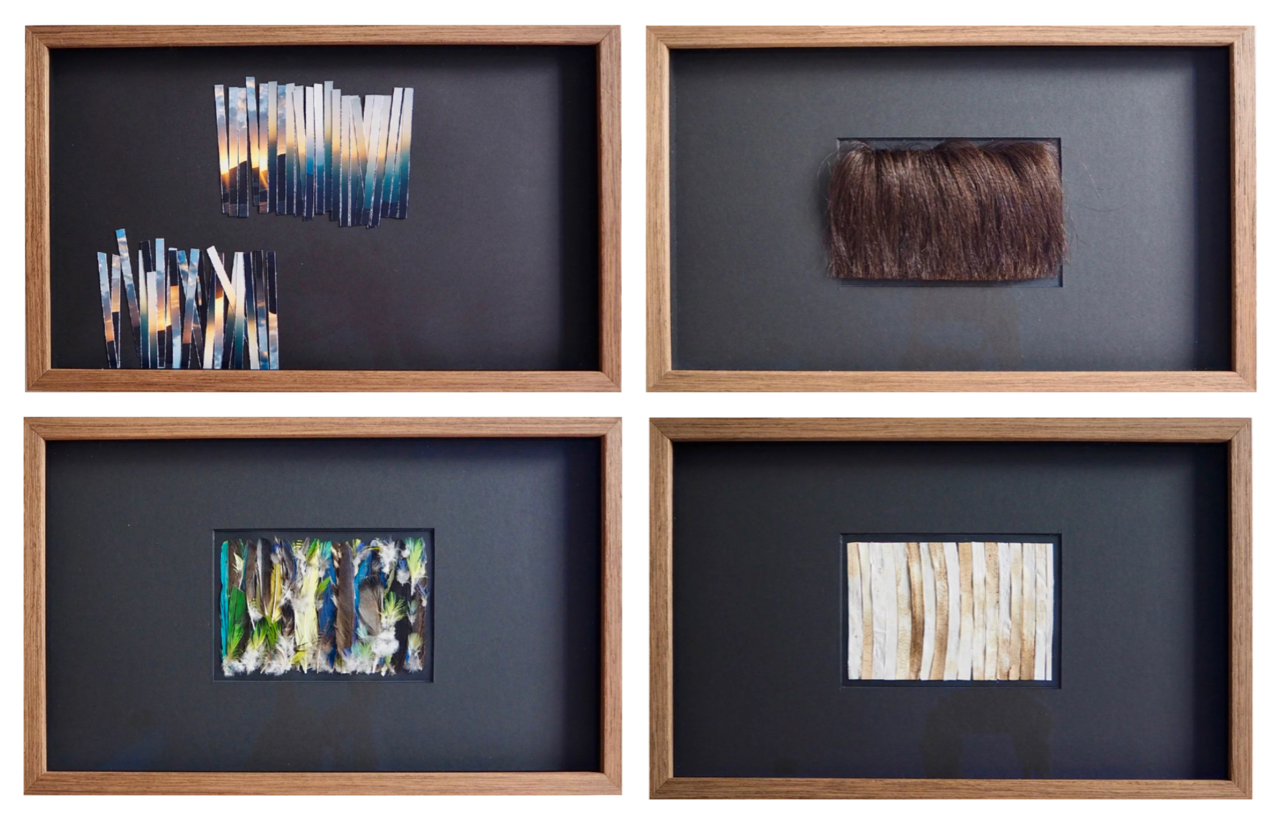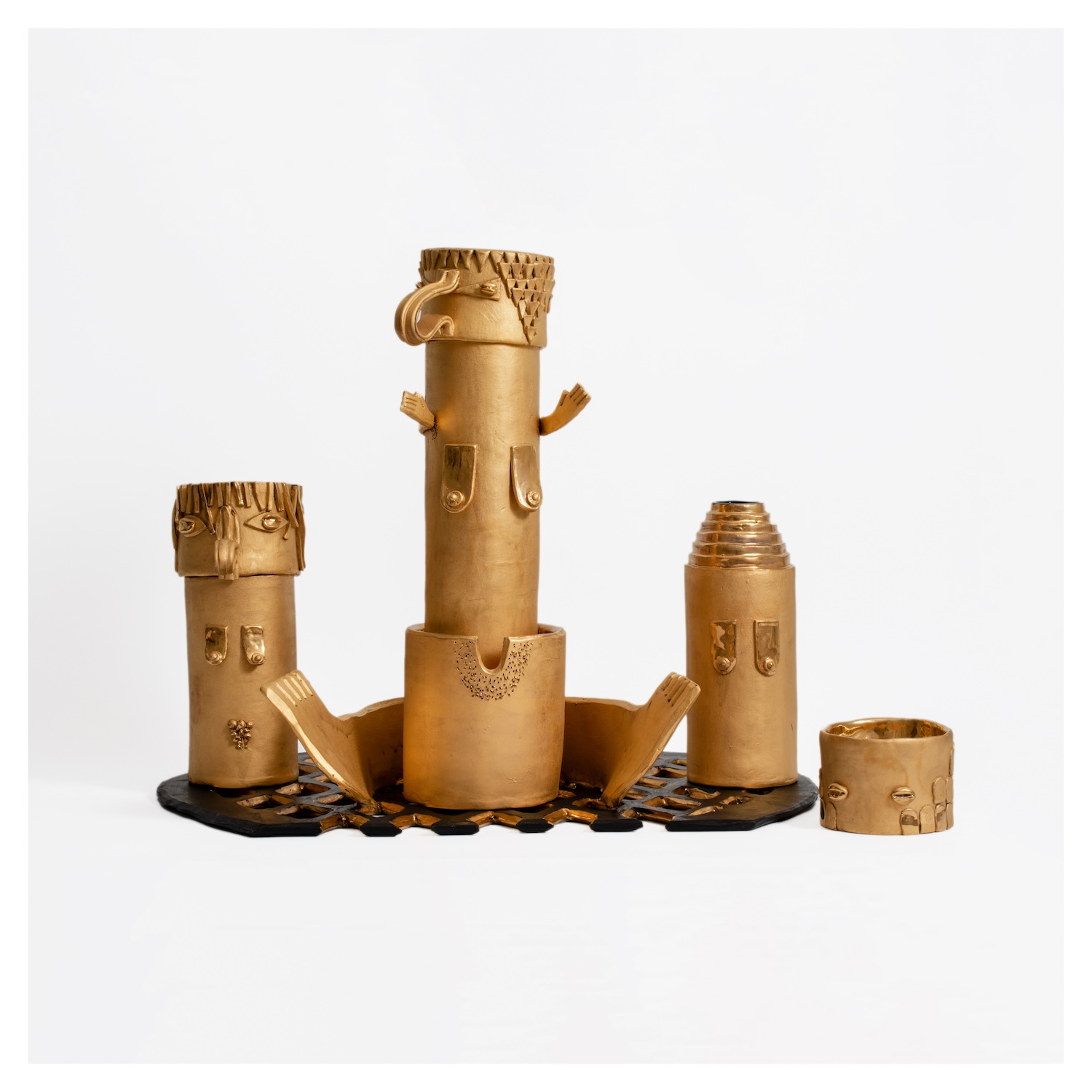Truth, Old Past
05/10/2024 - 17/01/2025
Truth, Old Past
October 5, 2024 - January 17, 2025
Opening Reception: October 5, from 5 pm to 8 pm
Zilberman Miami, 25 NE 39th St., Miami, FL 33137
Artists: Sena Başöz, Miguel Braceli, Yane Calovski, Cheen & Manuel Chavajay, Liz Cohen, Michail Michailov, Judith Raum, Jonathan Sanchez Noa, Kevin Umaña, Heba Y. Amin
Curator: Omar Lopez-Chahoud
*Please scroll down for Spanish.
Truth, Old Past is a group exhibition that focuses on artists from diverse cultural backgrounds whose works project towards a utopian future of cultural transformation as a result of past experiences, which are often preserved and shared in the form of archives or oral traditions. By directly referencing factual events, experiences, and knowledge that occurred in the distant and recent past, we come to understand and acknowledge historical events, cultural traditions, and societal norms that have shaped our present reality. Exploring the truth of the old past, we can learn from past mistakes, deepen an understanding of our roots, and appreciate the progress that has been made over time.
Sena Başöz’s (Turkish, b.1980) work incorporates different media—for example, archival postcards, personal photographs of sunrises and sunsets, bird feathers, human hair, and dry seaweed on paper—which the artist shreds to reconstruct images that evoke the ritualistic approach to healing. The artist leaves these messages on how to coexist harmoniously to an as-yet unrealized future.
Miguel Braceli’s (Venezuelan, b. 1983) work references past conflicts between opposing political views—left and right—that often result in a ruling system of oppression and hopelessness. Braceli’s symbolic and metaphorical references, such as a flag with two poles, create frustration and tension among a group of people trying to raise the flag in a ceremony with no success.
Yane Calovski’s (Macedonian, b.1973) work reinterprets modernist tendencies of constructing narratives and their effects on how society constructs identity. Utilizing archives and memory, Calowski references architecture to examine the impact of post-Soviet trauma in Eastern Europe. Through writing, drawing, video, and installations, the artist processes information to create a complex scenario that questions how history is practiced, presented, and consumed.
Cheen (Guatemalan b.1983) & Manuel Chavajay (Guatemalan b.1982) are indigenous artists from the Maya Tz’utujil community in Guatemala who often collaborate to realize works that speak to their experiences as members of a cultural group that has shaped and contributed to today’s Guatemalan identity. Their work speaks to and reinforces their heritage and the hundreds of families, including theirs, who suffered during the violent armed conflict that affected the country in recent years. Embracing Mayan cosmology and nature, Cheen and Chavajay use the creative process as a way of healing.
Liz Cohen’s (American, b.1973) Las Comadres | Matriarchas is a series of ceramics honoring women’s labor in the coffee fields of Colombia and its importance in the current global commodity trade. Cohen’s appropriation and references of pre-Hispanic pottery and the country's rich past defy notions of a nation of violence and poverty precipitated by U.S. president Ronald Reagan and Cold War propaganda.
Michail Michailov’s (Bulgarian, b. 1978) video performance titled Refuging forces the spectator to confront the artist, as Michailov struggles with the rough weather of the high Alpine terrain of Austria and his own locomotion, carrying heavy ski equipment to delineate a circle in the snow. By embodying the artist's experience, of trying to adapt to the cultural characteristics of his country of choice, he refers to the ongoing refugee crisis affecting the current global dynamics, a result of past political conflicts.
Judith Raum’s (German, b.1977) multidisciplinary practice and her use of textiles that reference the 1920s Bauhaus School in Germany are key aspects of her work. They unravel the politics and history of the time and how it affected the economic and social structure of post-colonial critique within Europe. Baum’s research-based approach and use of archives is a testament to the artist’s interest in unveiling dark moments of recent times.
Jonathan Sanchez Noa (Cuban,1994) is a multidisciplinary artist working with drawing, installation, and sculpture. He creates artworks that examine how histories of colonial extractivism have impacted notions of race, identity, and climate. He utilizes Cuban tobacco as a medium to reconstruct narratives of displacement in relation to cultural and religious significance.
Kevin Umaña’s (Salvadorian, b.1989) beautifully rendered geometric paintings and ceramics draw references to the culture of the Pipil people, an indigenous group that struggles to preserve its own identity after the 1930’s aftermath and genocide committed by the dictatorship in El Salvador at the time. Umaña’s childhood memories and family ancestry—native to the Western and Central areas of present-day El Salvador—present a complex puzzle and scenario, where the aim is to reconstruct a complex landscape of the artist's history and identity.
Heba Y. Amin’s (Egyptian b.1980) art projects are layered with political themes, archival history, and the personal. Amin confronts and reexamines 20th century fascist interventionist policies in the Middle East and North Africa, often focusing on her native Egypt. Her artistic practice incorporates the use of diverse mediums such as photography, film, installations, and archival materials to craft lecture performances. The artist inverts the dynamics between the colonizer and the colonized, using architecture as a metaphor for a utopian future within the region.
-
Truth, Old Past es una exhibición colectiva que se enfoca en artistas de diversos orígenes culturales cuyas obras proyectan un futuro utópico de transformación cultural como resultado de experiencias pasadas, que a menudo se preservan y comparten en forma de archivos o tradiciones orales. Al referenciar directamente hechos, acontecimientos y conocimiento del pasado distante y reciente, llegamos a comprender y reconocer los eventos históricos, tradiciones culturales y normas sociales que han moldeado nuestra realidad actual. Cuando exploramos la verdad del pasado, podemos aprender de los errores, profundizar en la comprensión de nuestras raíces y apreciar el progreso que se ha logrado a lo largo del tiempo.
Sena Başöz (Turquía, 1980) incorpora en su obra diversos medios —por ejemplo, postales de archivo, fotografías personales de amaneceres y atardeceres, plumas de aves, cabello humano y algas secas sobre papel—, que tritura para reconstruir imágenes que evocan un enfoque ritualista hacia la sanación. La artista deja estos mensajes sobre cómo coexistir de manera armoniosa en un futuro que aún no existe.
Miguel Braceli (Venezuela, 1983) hace referencia a conflictos pasados entre visiones políticas opuestas —izquierda y derecha— que a menudo resultan en un sistema de opresión y desesperanza. Las referencias simbólicas y metafóricas de Braceli, como una bandera con dos mástiles, parecen generar frustración y tensión en un grupo de personas que intentan izar la bandera en una ceremonia sin éxito.
Yane Calovski (Macedonia, 1973) reinterpreta con su obra las tendencias modernistas de construcción de narrativas y sus efectos en la forma en que la sociedad construye identidad. Utilizando archivos y la memoria, Calowski referencia la arquitectura para examinar el impacto del trauma postsoviético en Europa del Este. A través de la escritura, el dibujo, el video y la instalación, el artista procesa información para crear un escenario complejo que cuestiona cómo se practica, presenta y consume la historia.
Cheen (Guatemala, 1983) y Manuel Chavajay (Guatemala, 1982) son artistas indígenas de la comunidad Maya Tz'utujil en Guatemala que a menudo colaboran para realizar obras que hablan de sus experiencias como miembros de un grupo cultural que ha moldeado y contribuido a la identidad guatemalteca actual. Su trabajo habla y refuerza su herencia y la de cientos de familias, incluida la suya, que sufrieron durante el violento conflicto armado que afectó al país en años recientes. Abrazando la cosmología maya y la naturaleza, Cheen y Chavajay utilizan el proceso creativo como una forma de sanación.
Liz Cohen (USA, 1973) con su serie de cerámicas Las Comadres | Matriarchas honra el trabajo de las mujeres en los campos de café de Colombia y su importancia en el actual comercio global de productos básicos. La apropiación y las referencias de Cohen a la alfarería prehispánica y al rico pasado del país desafían las nociones de una nación de violencia y pobreza, precipitada por el presidente estadounidense Ronald Reagan y la propaganda de la Guerra Fría.
Michail Michailov (Bulgaria, 1978) con su video-performance titulado Refuging obliga al espectador a confrontar al artista: Michailov lucha contra el clima adverso del terreno alpino austriaco y su propia locomoción y carga un pesado equipo de esquí para delinear un círculo en la nieve. Al encarnar la experiencia del artista de intentar adaptarse a las características culturales de su país de elección, hace referencia a la actual crisis de refugiados que afecta las dinámicas globales, resultado de conflictos políticos pasados.
Judith Raum (Alemania, 1977), en su práctica multidisciplinaria, utiliza textiles que referencian la Bauhaus de los años 1920 en Alemania. Estos aspectos desentrañan la política y la historia de la época y cómo afectaron la estructura económica y social de la crítica poscolonial en Europa. El enfoque investigativo de Raum y su uso de archivos es un testimonio del interés de la artista por desvelar los momentos oscuros de tiempos recientes.
Jonathan Sanchez-Noa (Cuba, 1994) es un artista multidisciplinario que trabaja con dibujo, instalación y escultura, y crea obras que examinan cómo las historias del extractivismo colonial han impactado las nociones de raza, identidad y clima. Utiliza tabaco cubano como medio para reconstruir narrativas de desplazamiento en relación con significados culturales y religiosos.
Kevin Umaña (Salvador, 1989) en sus cuiadosamente elaboradas pinturas y cerámicas geométricas, hace referencia a la cultura del pueblo Pipil, un grupo indígena que lucha por preservar su propia identidad tras las secuelas del genocidio cometido por la dictadura en El Salvador en la década de 1930. Los recuerdos de infancia de Umaña y la ascendencia de su familia, nativa de las áreas occidentales y centrales del actual El Salvador, presentan un rompecabezas complejo, donde el objetivo es reconstruir un paisaje de la historia e identidad del artista.
Heba Y. Amin (Egipto,1980) crea proyectos artísticos, compuestos por temas políticos, historia de archivo y lo personal. Amin confronta y reexamina las políticas intervencionistas fascistas del siglo XX en el Medio Oriente y el Norte de África, a menudo enfocándose en su Egipto natal. Su práctica artística incorpora el uso de diversos medios como la fotografía, el cine, las instalaciones y materiales de archivo para crear conferencias performativas. La artista invierte las dinámicas entre colonizador y colonizado, utilizando la arquitectura como una metáfora para un futuro utópico dentro de la región.
by Omar López-Chahoud
» SEE ALSO
Artist Pages
- Heba Y. Amin
- Sena Başöz
- Yane Calovski
- Judith Raum







































